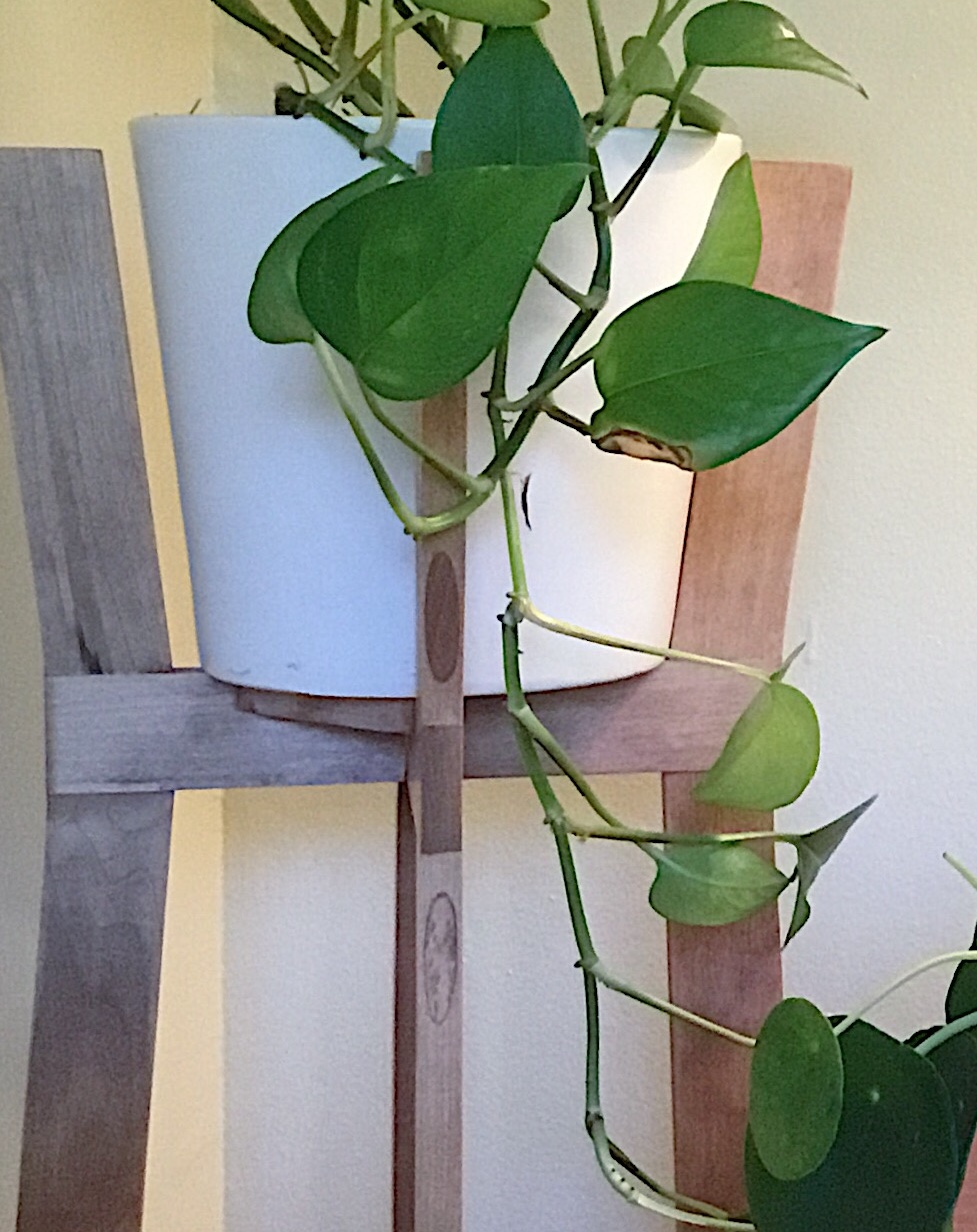Hello everyone! This is week 4 of the One Room Challenge. Welcome to my blog where I share my passion for creating comforting homes by thrifting, sewing and a little diy-ing along the way! While I’m not averse to buying new. I love being able to stretch a budget AND get that “layered over time” look that comes from incorporating pieces that have had a previous life! You can follow my decorating journey on the HomeSpunStyle Instagram.
If you missed my previous posts on the college apartment makeover, you can find them here:
Week 1 – Before photos and design board
This week for the college apartment makeover, my focus was on incorporating some plants into the overall decor. When a room feels flat, add a plant or two or three! Frankly, I am all about the air cleansing quality of house plants, especially in a college campus setting where germs abound.
My daughter already had quite a few plants that I could choose from, but lacked the plant stands needed to give them some height. (Since this is university housing, hanging anything from the ceiling is not allowed). I also wanted to keep table tops as clear as possible to give the girls room for their laptops, beverages, etc.
Trolling Pinterest for ideas, this is the photo that became the inspiration for our DIY plant stand.
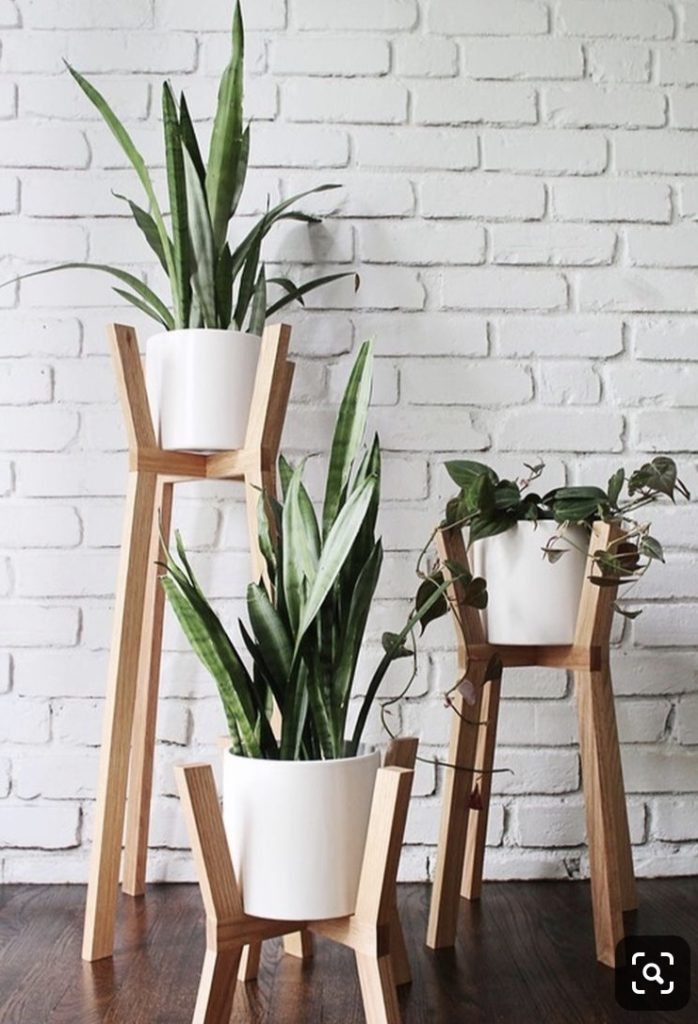
Newston.co
(the link is broken but if anyone knows who this photo belongs to, let me know so I can give them proper credit)
Unfortunately, I couldn’t find anything more about the stands in the photo but my husband, Tom, offered to try making one.
Here’s how we made our 34 inch tall mid-century style wood plant stand:
1.Materials: four, 1/2 x 2 x 48 inch maple boards; one white ceramic pot, 7 inches tall, 6 inches in diameter at the base and 7 1/2 inches in diameter at the top. All purchased from Lowes.

2.We determined we needed a 3 degree angle on the four legs. This was a matter of “playing” with the boards, to get an angle that we thought looked similar to the inspiration photo. Using a clamp to hold all four boards tightly together, Tom set a 3 degree angle on his miter saw and then cut the boards all at once.

3. He then measured 25 1/2 inches from the cut ends and repeated the 3 degree angle cuts on the other end of the four boards. These four, 25 1/2 inch boards became the bottom legs for the stand.
4. For the 4 top pieces that hold the pot in place, he cut four, 7 inch long pieces with a 7 degree angle on the top and bottom of each board. We chose 7 inches for the length because that is the height of the pot I am using. The 7 degree angle was needed to accommodate the flare of our pot.
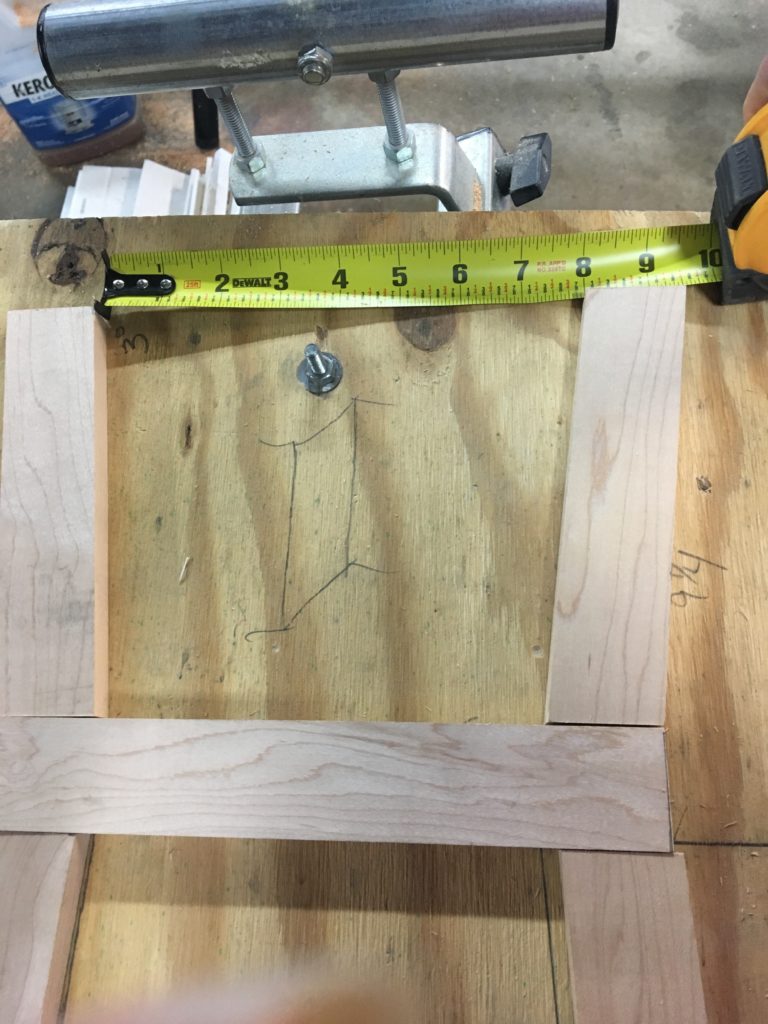
5.Next, we cut the two base pieces that the pot would sit on. We made each piece 9 1/4 inches long. We calculated the length by adding the diameter of the pot base plus a quarter inch ( 6 1/4 inch) + the width of 2 of the legs (1.5 inches each) = 9 1/4 inches. Note: Even though boards are called 2 x 4’s, they are actually 1.5 inches wide, not 2!
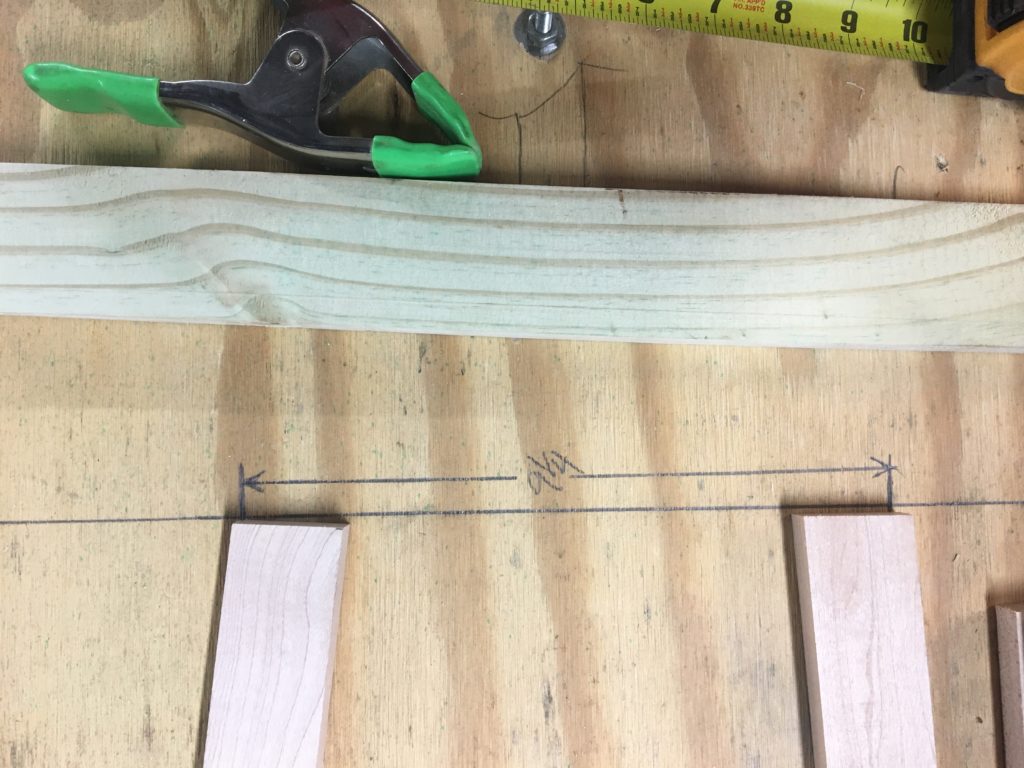
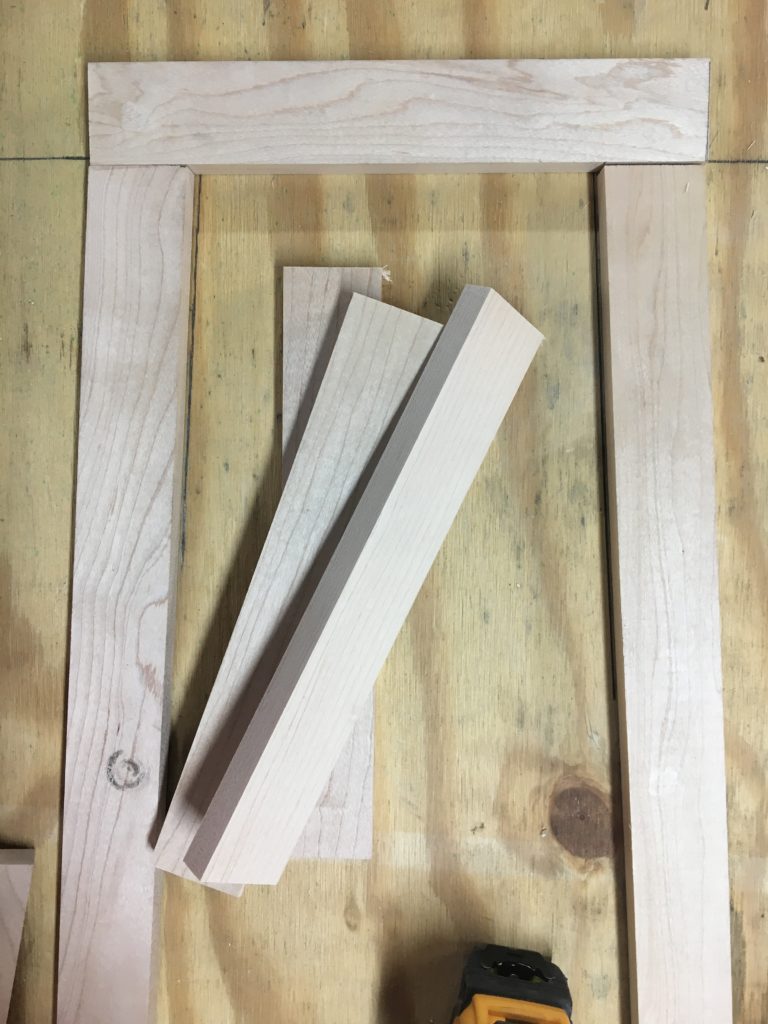
6.Using a Dado set, Tom notched out a groove in the 2 base pieces so that they would interlock in the middle at right angles.
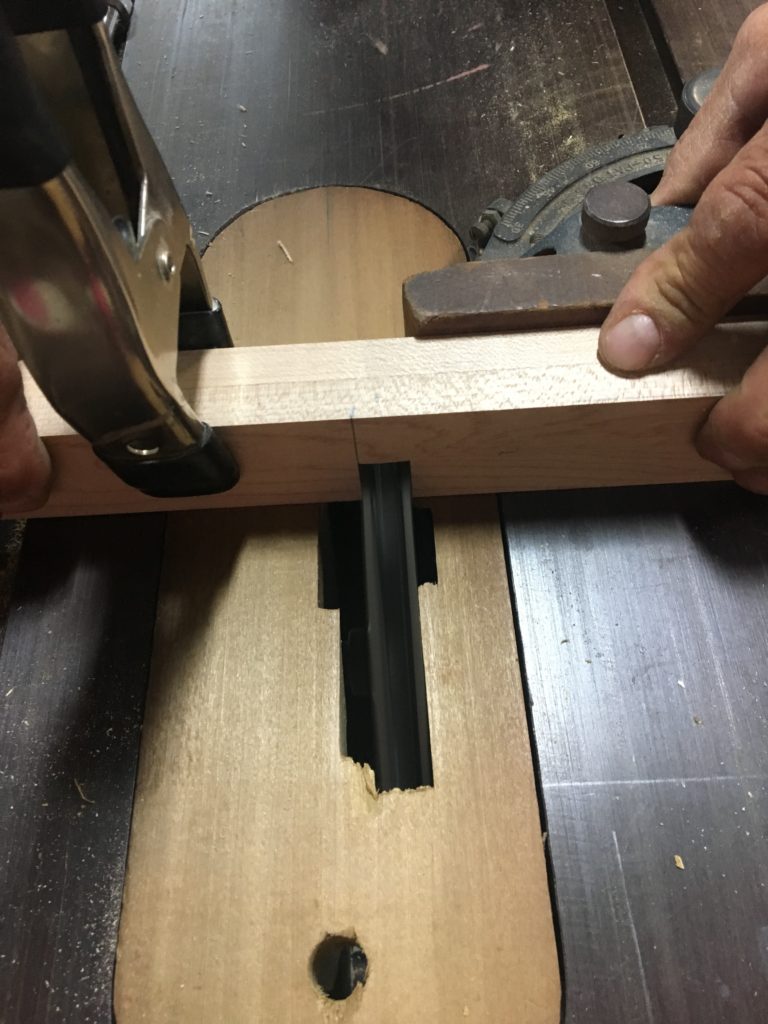

7.Now it was time to lay the pieces out for assembly like this:

Two of these “H” shapes together will form our plant stand.
8.First, we attached 2 legs to each base piece. To do this, Tom used a drill and a Kreg pocket hole jig to make holes upward on the outside of each leg. This enabled him to insert screws angled upward on the outside of each leg to secure the legs to the base pieces. This rough sketch shows how the screws would go in upward on the legs and downward on the top pieces:
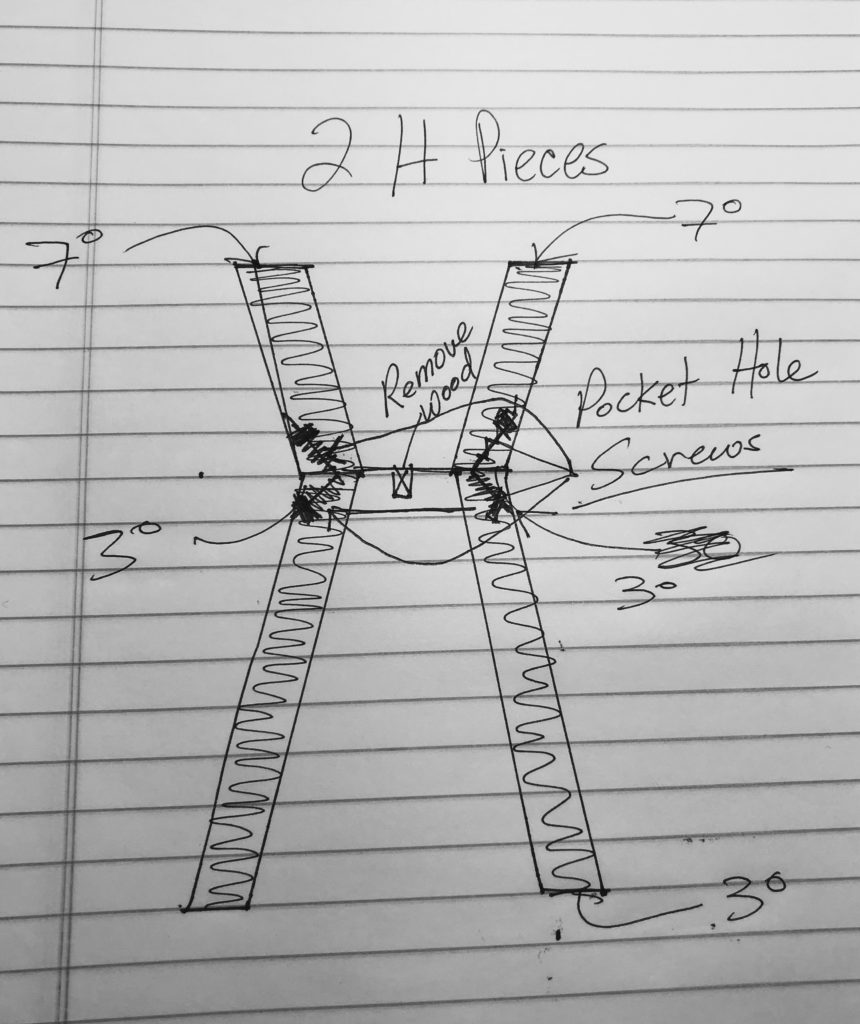
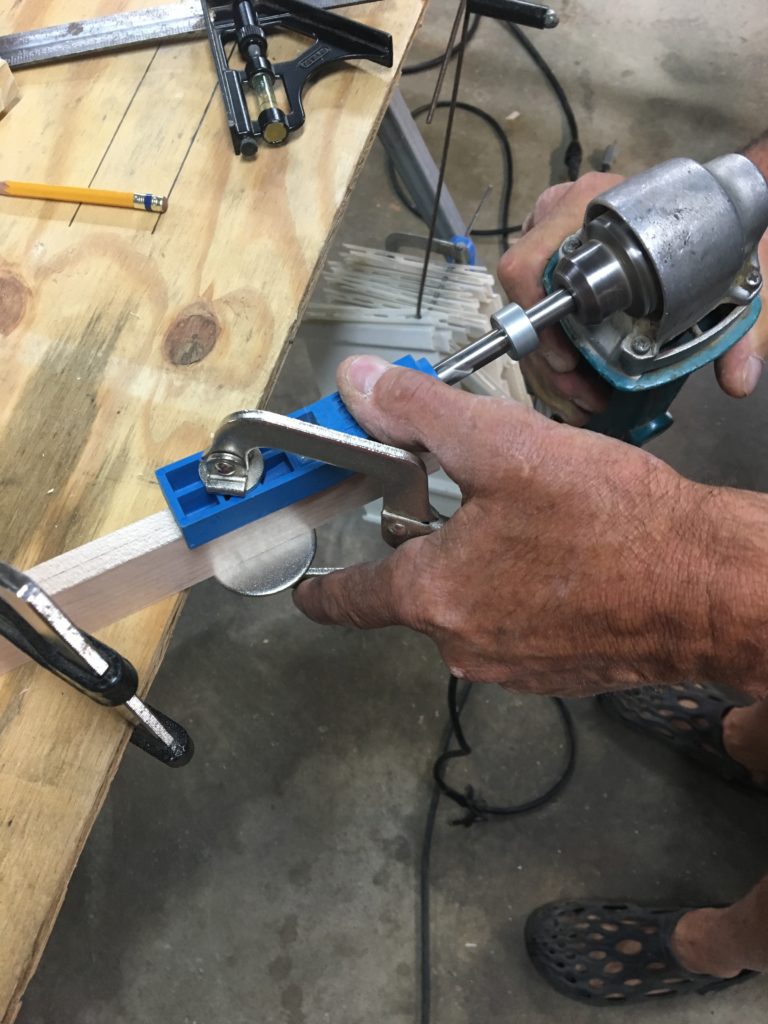
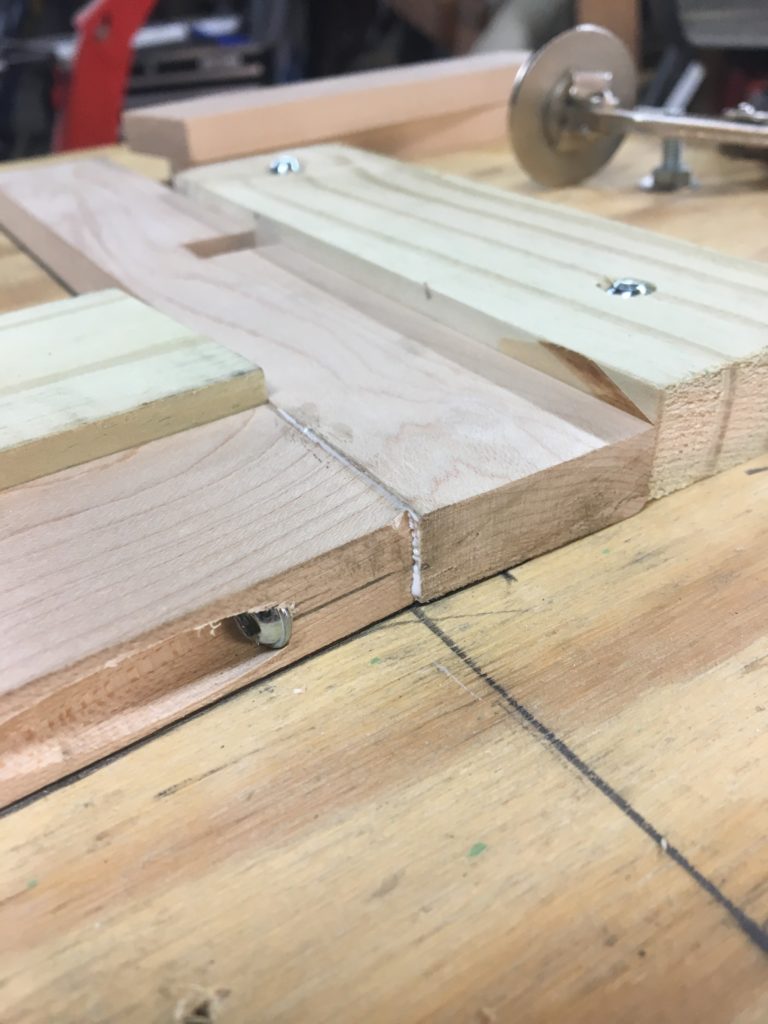
Note that before he screwed the pieces together, he first applied some wood glue to the edges. The screws are 1 1/4 inch Kreg pocket hole screws.
9.We then attached 2 top pieces to each base piece. Using the drill and pocket hole jig again, Tom drilled downward holes on the outside of each top piece and then inserted the screws to attach them to the base.
10.To assemble the two halves of the plant stand, he interlocked the 2 base pieces together at right angles and then secured it with a wood screw drilled up from the bottom.
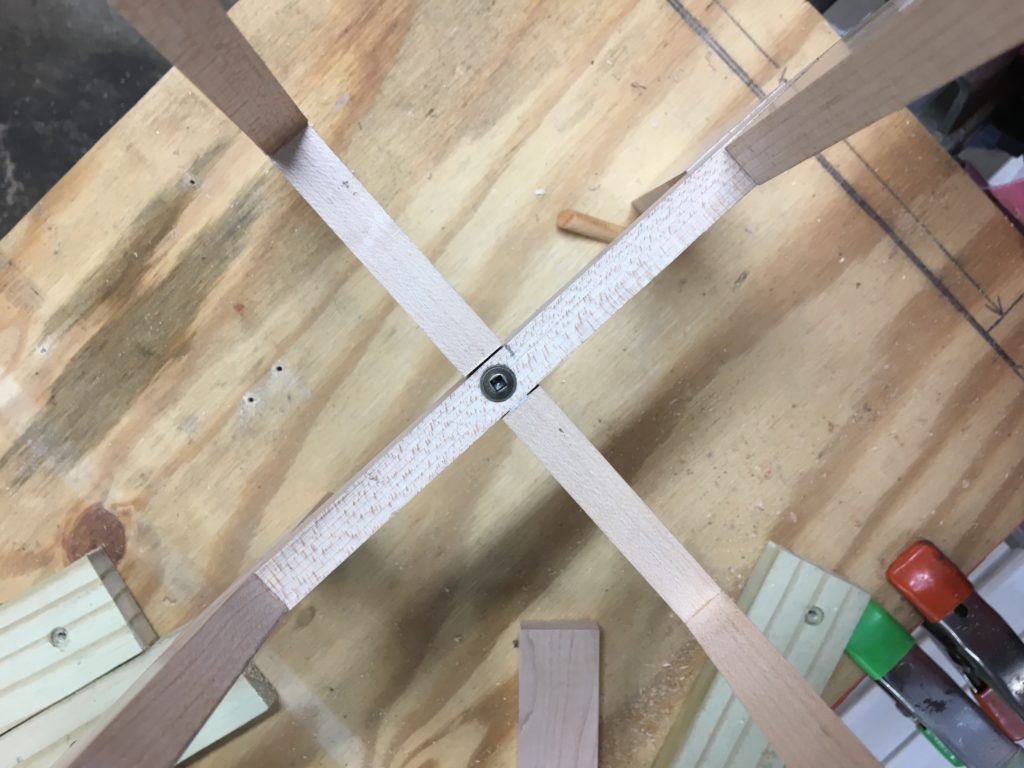
11. Because of its height we needed to stabilize it a bit more by adding two wood triangular wedges. Tom glued them in place and then nailed them using an air gun.


12.To cover the holes created by the pocket hole jig, we used Kreg pocket hole screw plugs. We applied a little wood glue on each plug before tapping in lightly with a hammer.
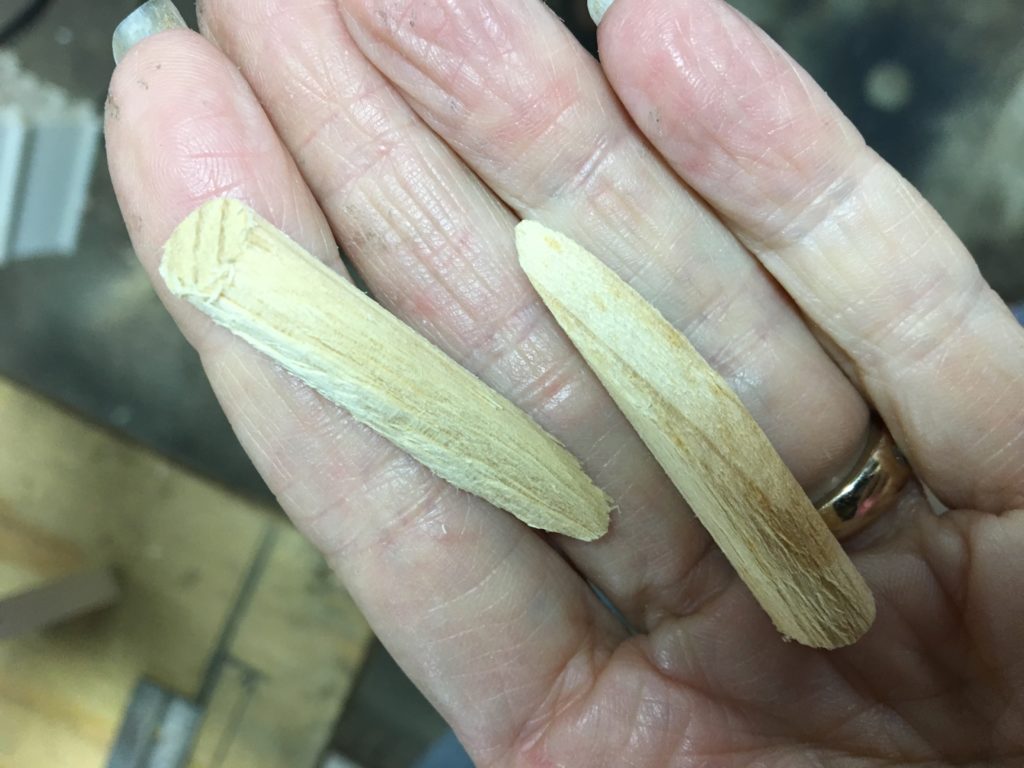
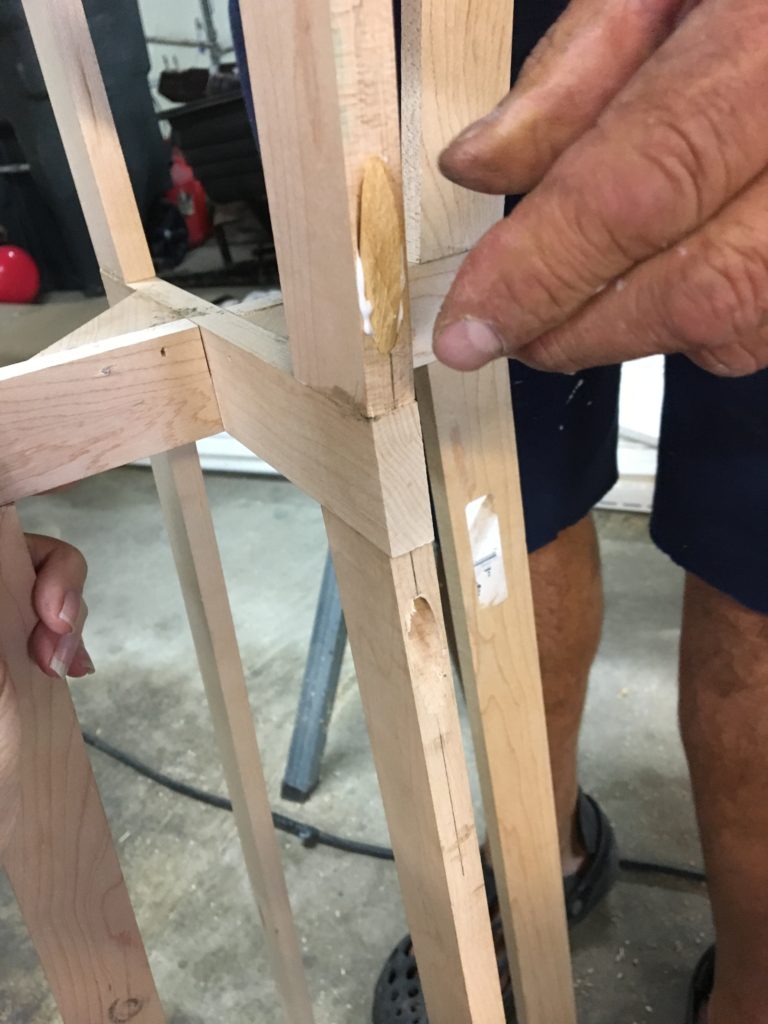
13. Tom then clamped each one with a wood clamp to apply pressure until the glue dried.
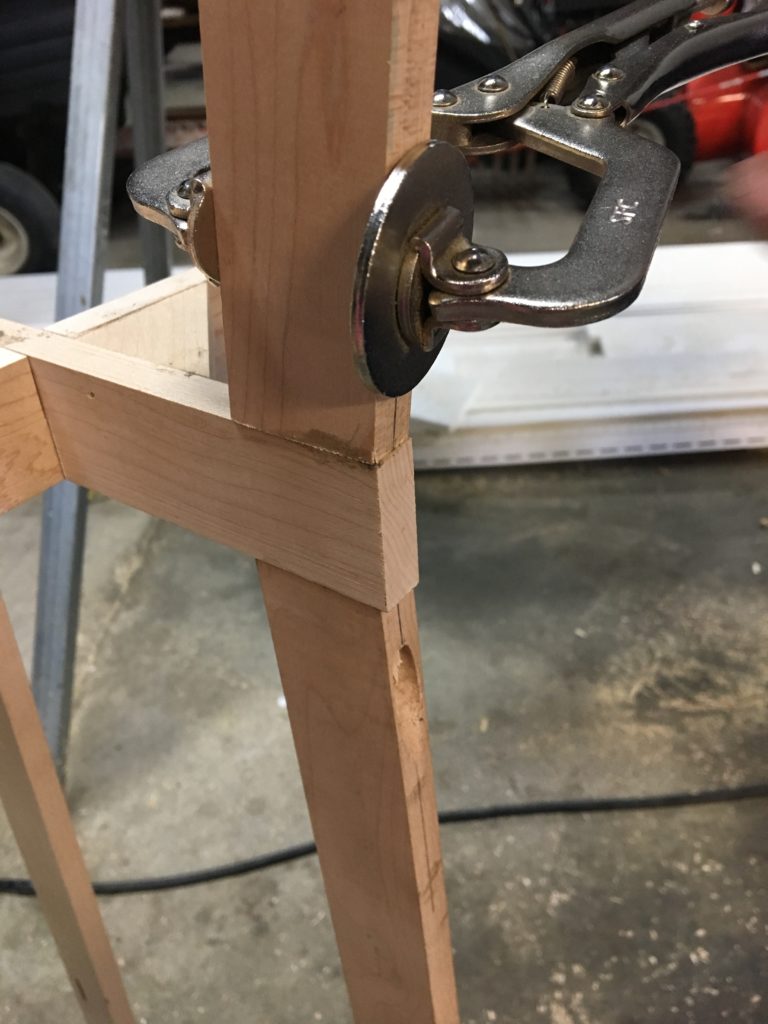
14. Then he sanded the wood plugs to be the same level as the rest of the wood.
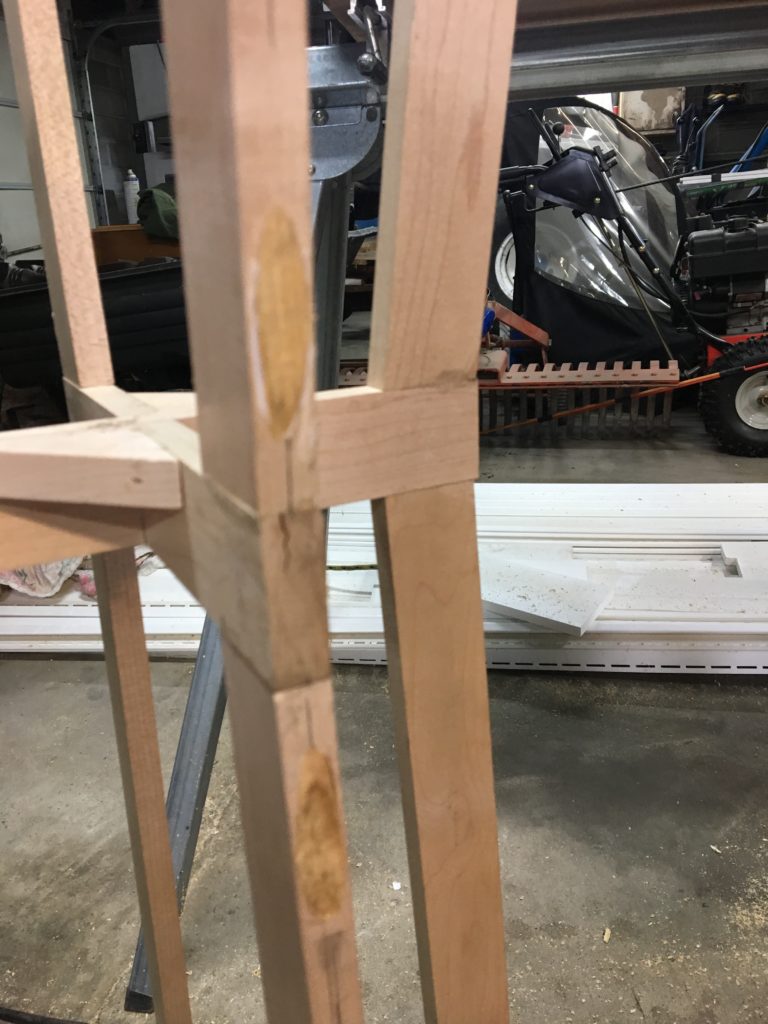
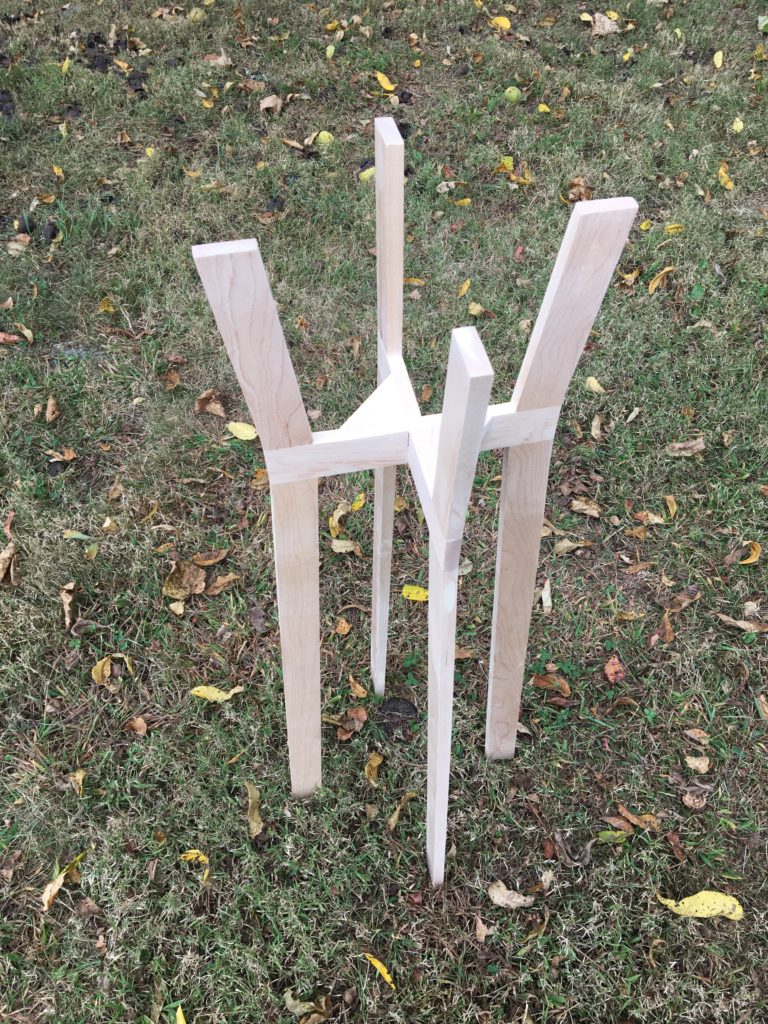
15. The final step was to stain the plant stand. We used Minwax cherry stain which darkened the wood just a little bit. I still need to add a couple of coats of polyacrylic.
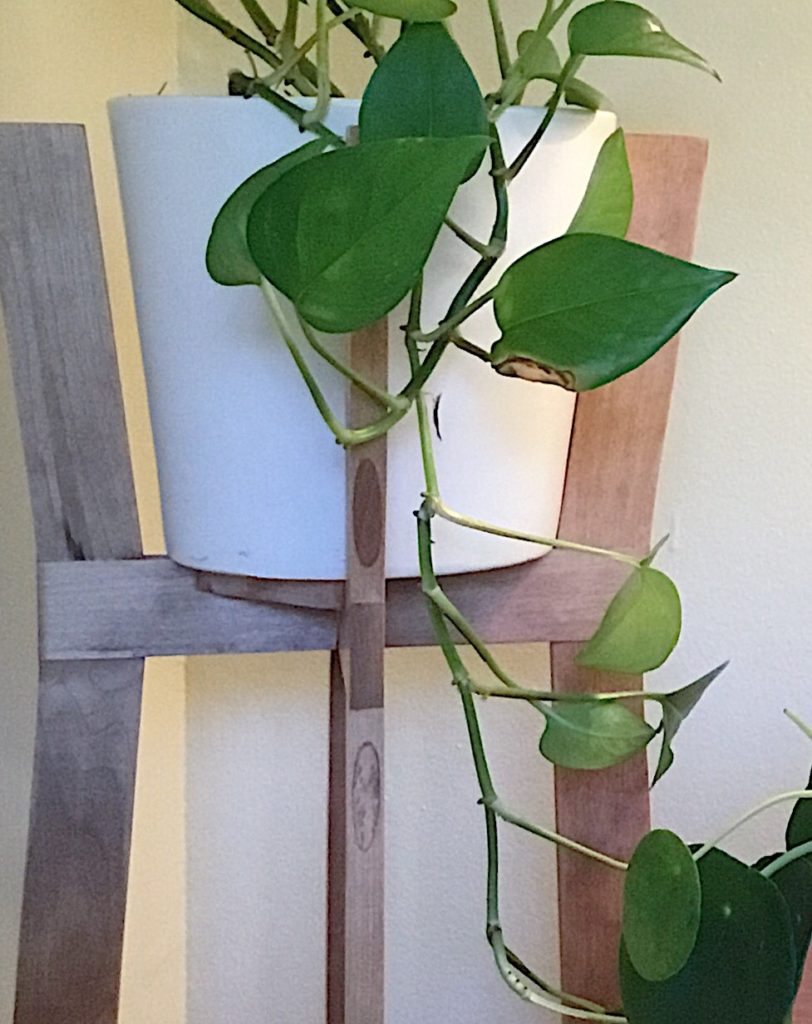
Now, back to the college apartment living room. We used Elizabeth’s pathos and positioned the plant stand in the corner of the room, as close to the wall as possible.
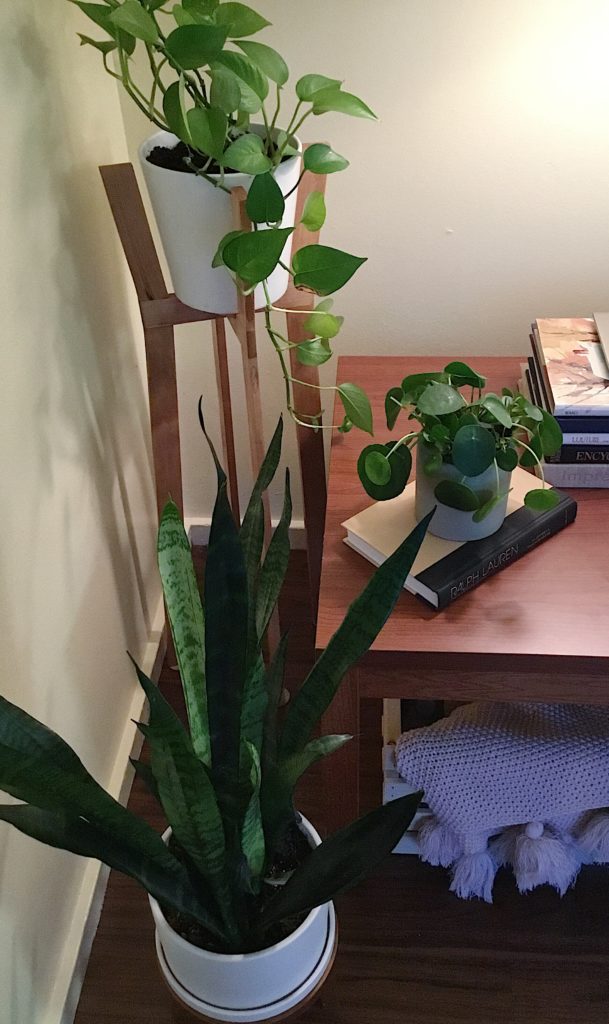
We secured the long tendrils of the pathos up the corner of the wall and then across the top of the basket wall using the smallest 3m command hooks.

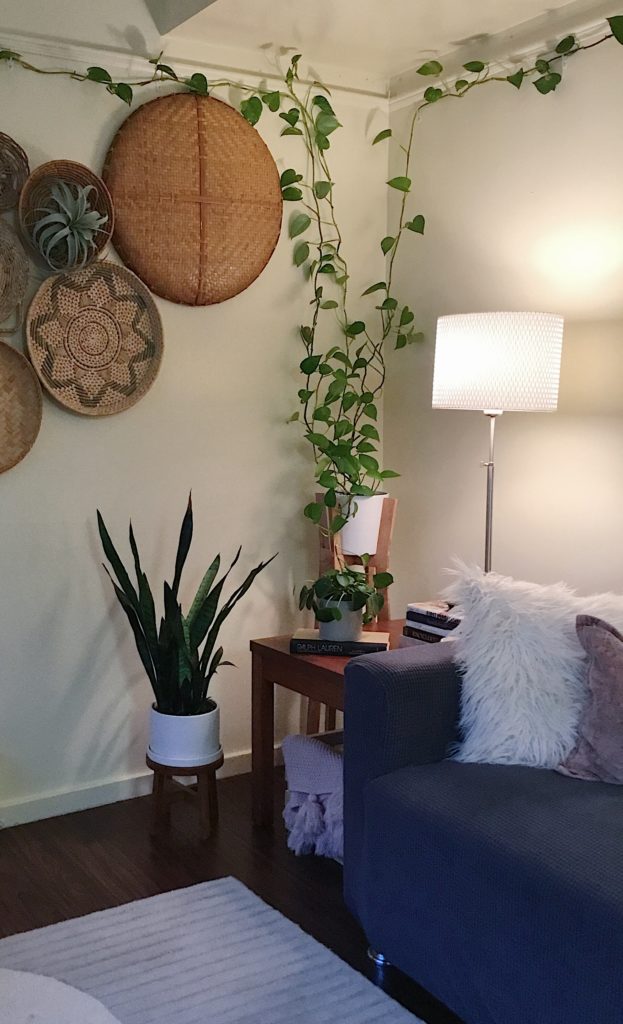
We spent $35 for the wood for this project. The other materials we already had. I’d like to make a second plant stand, about a foot shorter, to fill up this corner a bit more … if my carpenter is willing!
I’ll be back next Thursday with more progress on my College Apartment Living Room Makeover. Be sure to check out all of the other Guest Participants in the One Room Challenge to follow along with their progress. There are also 20 Featured Participants which you can follow too!


